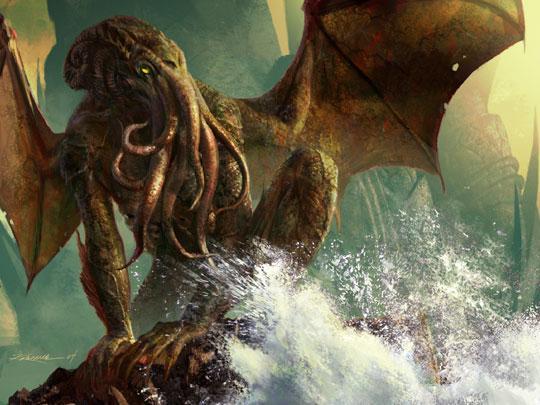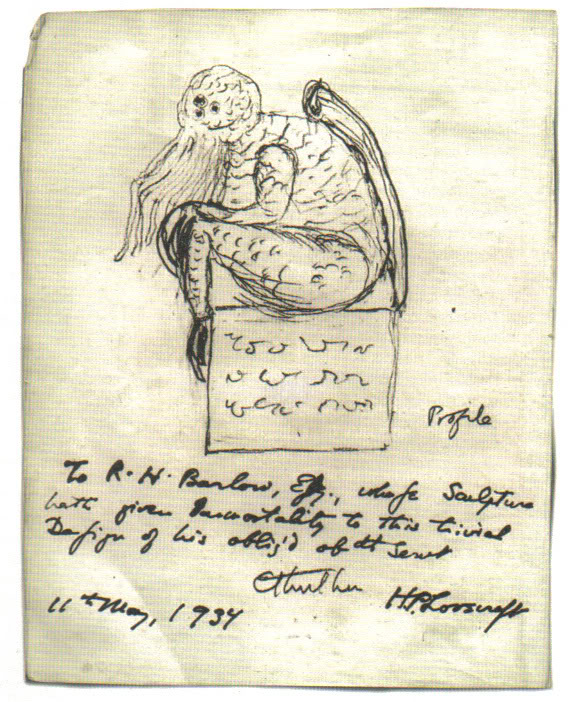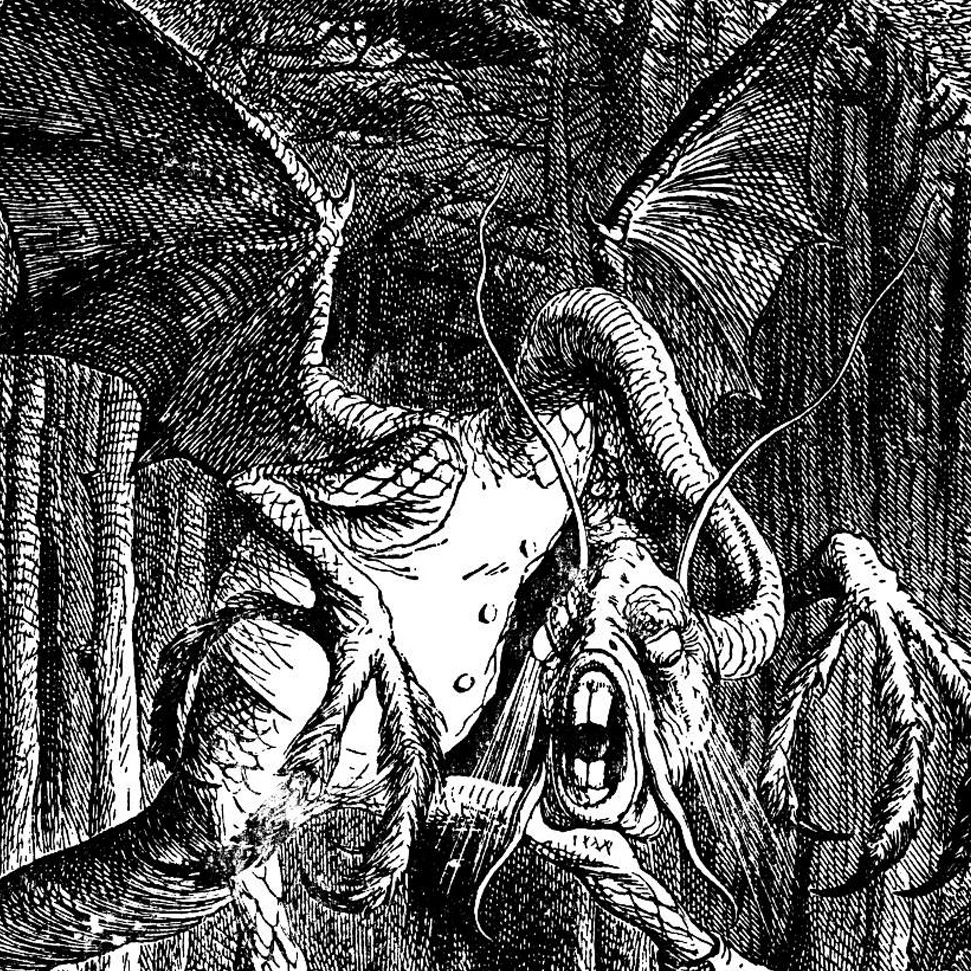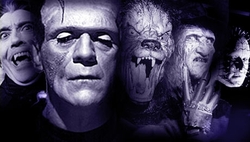"In his house at R'lyeh,
dead Cthulhu waits dreaming."
The most well-known of horror writer H.P. Lovecraft's creations, Cthulhu is one of the Great Old Ones, a group of powerful, primordial and malignant cosmic entities that are said to be present on Earth. Cthulhu himself lays dormant within an underwater city in the South Pacific called R'lyeh, where he waits to be awakened and let loose upon the world again. Despite his imprisonment, however, the elder god is apparently the source of constant anxiety for mankind at a subconscious level, and also the subject of worship by a number of human religions.
The monstrosity makes his first appearance in Lovecraft's 1928 short story, The Call of Cthulhu, which details the discovery of the elder god's existence, encounters with a cult that worships him and finally the accidental release of Cthulhu himself at the story's climax. There are also several references made to the entity in later works of Lovecraft's so-called Cthulhu Mythos, many of which suggest vague links to other such entities. It is interesting to note, however, that while Cthulhu is certainly the most well-known of Lovecraft's fictional deities, he is not the most powerful; that honour goes to one of the Outer Gods, such as Azathoth, Nyarlathotep and Yog-Sothoth.
A sketch of Cthulhu by H.P. Lovecraft in 1934
Cthulhu is consistently described as a mix between a giant human, an octopus, and a dragon. Typical depictions show an octopus-like head, and a vaguely humanoid body with large, rudimentary wings. Lovecraft himself describes the elder god as "A monster of vaguely anthropoid outline, but with an octopus-like head whose face was a mass of feelers, a scaly, rubbery-looking body, prodigious claws on hind and fore feet, and long, narrow wings behind." Other references to the creature's appearance note that the "thing cannot be described," but it is called "the green, sticky spawn of the stars", with "flabby claws" and an "awful squid-head with writhing feelers." The character that meets Cthulhu face-to-face also uses the phrase "a mountain walked or stumbled" when describing its movement, which gives a sense of scale to its size.
Yeah, I'm probably going to give this guy the 'Guillermo del Toro' treatment















